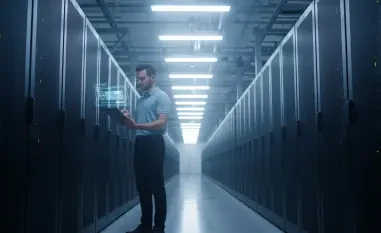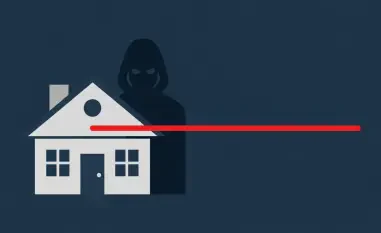In an era where digital threats loom larger than ever, Google’s rapid release of the Chrome 142 update has sparked significant attention across the cybersecurity community, highlighting the critical need for robust browser protection. With browsers serving as the gateway to countless online activities, a single vulnerability can expose millions of users to devastating attacks. This roundup dives into the critical security patches rolled out in Chrome 142, gathering perspectives from industry professionals, analysts, and tech observers to unpack the urgency of these fixes, the nature of the flaws, and the broader implications for browser safety. The goal is to provide a comprehensive view of how this update addresses high-severity risks and what it means for users navigating an increasingly perilous digital landscape.
Unpacking the Urgency of Chrome 142’s Security Rollout
The swift deployment of Chrome 142, shortly after its stable channel release, underscores Google’s response to pressing security concerns. Industry analysts have noted that the timing reflects a growing recognition of browsers as prime targets for cybercriminals. With multiple high-severity flaws identified, the update serves as a critical shield against potential exploits that could compromise user data on a massive scale.
Cybersecurity experts emphasize that the digital ecosystem’s reliance on browsers for everything from banking to social interactions amplifies the stakes. One perspective highlights that the speed of this patch rollout signals a shift in how tech giants prioritize user protection amid escalating threats. This urgency sets the stage for a deeper exploration of the specific vulnerabilities and their implications.
A contrasting view from some tech observers suggests that while rapid updates are commendable, they also expose the reactive nature of current security strategies. There is a shared concern that such patches, though necessary, often address issues after they’ve been identified as risks, prompting discussions on the need for more predictive measures in browser development.
Diving into the Critical Flaws Addressed
WebGPU Vulnerability: A High-Risk Exploit Target
At the heart of Chrome 142’s fixes lies a high-severity out-of-bounds write bug in the WebGPU API, identified as CVE-2025-12725 with a CVSS score of 8.8. Cybersecurity researchers point out that this flaw could allow attackers to manipulate memory beyond intended boundaries, potentially leading to crashes or the execution of malicious code. The consensus is that this vulnerability poses a significant threat given WebGPU’s role in enabling high-performance graphics.
Another angle comes from graphics technology specialists who stress the rising importance of browser-based AI and graphics workloads. They argue that such advanced APIs, while innovative, introduce complex security challenges that are difficult to mitigate without compromising functionality. The high CVSS score reinforces the urgency of addressing this flaw before it can be exploited in real-world scenarios.
A differing opinion from some security bloggers suggests that the focus on WebGPU might overshadow other systemic risks in browser architecture. They caution that as reliance on cutting-edge APIs grows, the industry must balance innovation with robust safeguards, advocating for stricter testing protocols to prevent such vulnerabilities from emerging in the first place.
Views and V8 Engine Bugs: Core Component Concerns
Beyond WebGPU, Chrome 142 tackles two additional high-severity issues: CVE-2025-12726 in the Views framework and CVE-2025-12727 in the V8 JavaScript engine, both also carrying a CVSS score of 8.8. Experts in browser security note that the Views flaw, tied to unsafe handling of UI object references, could lead to memory corruption via malicious webpages or extensions, risking unauthorized access to critical components.
The V8 engine vulnerability draws particular concern due to its history as a frequent target for threat actors. Software engineers familiar with JavaScript engines highlight that type confusion and memory corruption in V8 could enable remote code execution, a severe outcome that could compromise entire systems. Many agree that securing such core elements remains a persistent challenge for browser developers.
Some industry voices, however, express cautious optimism about Google’s rapid response to these bugs. They argue that while the risks are undeniable, the consistent patching efforts demonstrate a commitment to user safety. Yet, there is a lingering debate on whether these frequent fixes are sustainable or if a more fundamental redesign of core browser components is needed to reduce attack surfaces.
Broader Trends in Browser Vulnerabilities
The increasing complexity of web technologies, such as AI-driven tasks and dynamic content, is fueling a rise in browser vulnerabilities, according to tech trend analysts. They observe that as browsers evolve into platforms for sophisticated applications, the potential for security gaps expands, creating new opportunities for exploitation across various sectors and regions.
Global security consultants add that the universal dependence on browsers for critical functions heightens the impact of these flaws. Their perspective is that a single exploit can ripple through industries, affecting everything from corporate networks to personal devices. This reality calls for a reevaluation of how browser security is approached on an international scale.
A contrasting viewpoint from some independent researchers questions the adequacy of traditional patching cycles in this fast-evolving landscape. They advocate for a shift toward agile, proactive strategies that anticipate threats rather than merely responding to them. This debate underscores a broader tension between maintaining user convenience and ensuring airtight protection.
Medium-Severity Issues and Holistic Security Needs
Chrome 142 also addresses medium-severity flaws in the Omnibox, tracked as CVE-2025-12728 and CVE-2025-12729, which, while less critical, contribute to the overall security posture. Tech reviewers note that these issues, though lower in priority, remind users and developers alike that comprehensive defense requires attention to even minor vulnerabilities that could be chained with others for greater impact.
Insights from cybersecurity professionals reveal a shared belief that browsers represent vast attack surfaces due to constant tab activity and dynamic scripts. They argue that every element, no matter how small, plays a role in the broader security ecosystem, and neglecting lesser flaws can create openings for sophisticated attackers over time.
A differing opinion from some tech policy advocates suggests that the focus on high-severity bugs often sidelines these smaller issues, potentially delaying fixes that could prevent future escalations. They propose that a more balanced approach to patch prioritization could strengthen browser defenses, ensuring no vulnerability is overlooked in the race to address the most immediate threats.
Practical Takeaways for Chrome Users from Expert Advice
Drawing from various expert inputs, the critical nature of Chrome 142’s updates is clear, particularly regarding the high-severity flaws in WebGPU, Views, and V8. Security advisors universally recommend immediate updates to the latest versions, such as 142.0.7444.134 for Linux and 142.0.7444.135 for Mac and Windows, to mitigate risks of exploitation before they materialize.
Additional tips from browser safety guides include enabling automatic updates to ensure timely protection against emerging threats. They also suggest practical habits like minimizing the use of untrusted extensions, which can serve as entry points for malicious code, and regularly monitoring active tabs for unusual behavior that might indicate an exploit attempt.
A unique perspective from user experience specialists focuses on education as a defense mechanism. They encourage users to stay informed about browser security practices and to adopt cautious online behaviors, such as avoiding suspicious links, as a complement to technical updates. This multi-layered approach is seen as vital in an environment where threats evolve rapidly.
Reflecting on the Roundup’s Insights
Looking back, this roundup brought together diverse perspectives on Chrome 142’s security fixes, revealing a shared concern among experts about the escalating risks tied to browser vulnerabilities. The discussions illuminated the critical nature of high-severity flaws and the ongoing challenges in securing complex web technologies. Differing views on patching strategies and prioritization offered a nuanced understanding of the cybersecurity landscape at that moment.
As a next step, users and organizations were encouraged to not only apply the latest updates but also explore resources on browser security best practices for ongoing protection. Engaging with community forums and staying updated on threat advisories emerged as practical ways to remain vigilant. The conversation around proactive security measures hinted at a future where browser safety could rely more on anticipation than reaction, paving the way for stronger defenses in the years ahead.













